Glen Beach
Glen Beach
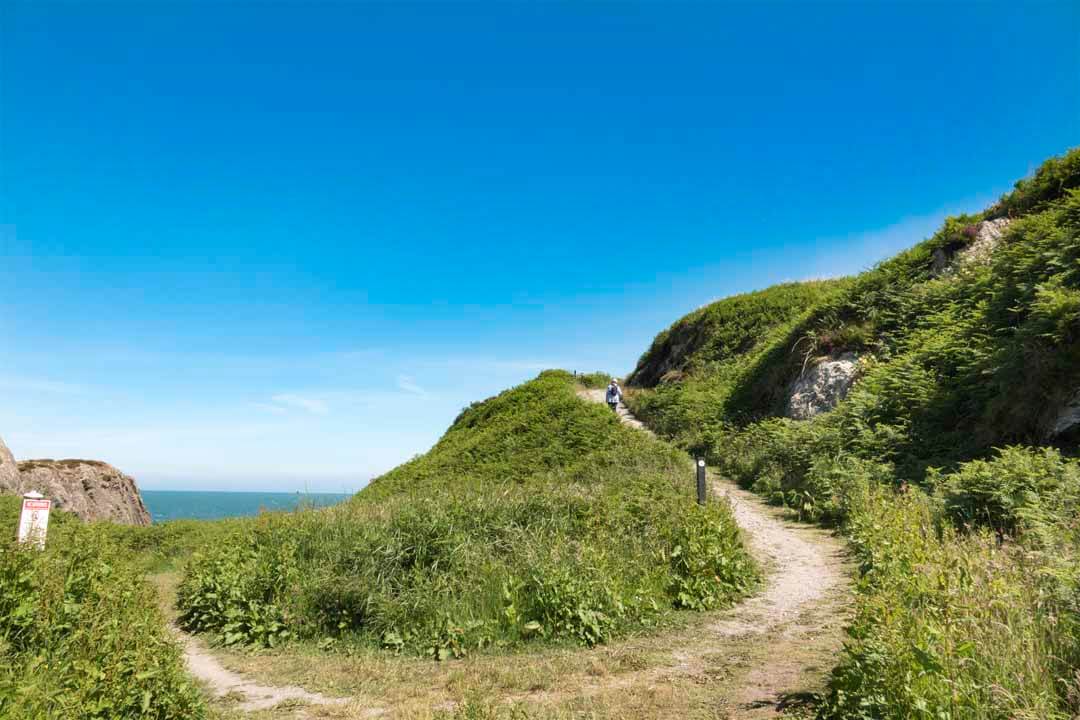
We stopped in Wicklow town for refreshments, which was a good idea and then headed for Glen Beach. If traveling from Dublin go straight through the town, this walk starts close to the golf course and has a dedicated car-park.
We stopped in Wicklow town for refreshments, which was a good idea and then headed for Glen Beach. If traveling from Dublin go straight through the town, this walk starts close to the golf course and has a dedicated car-park.
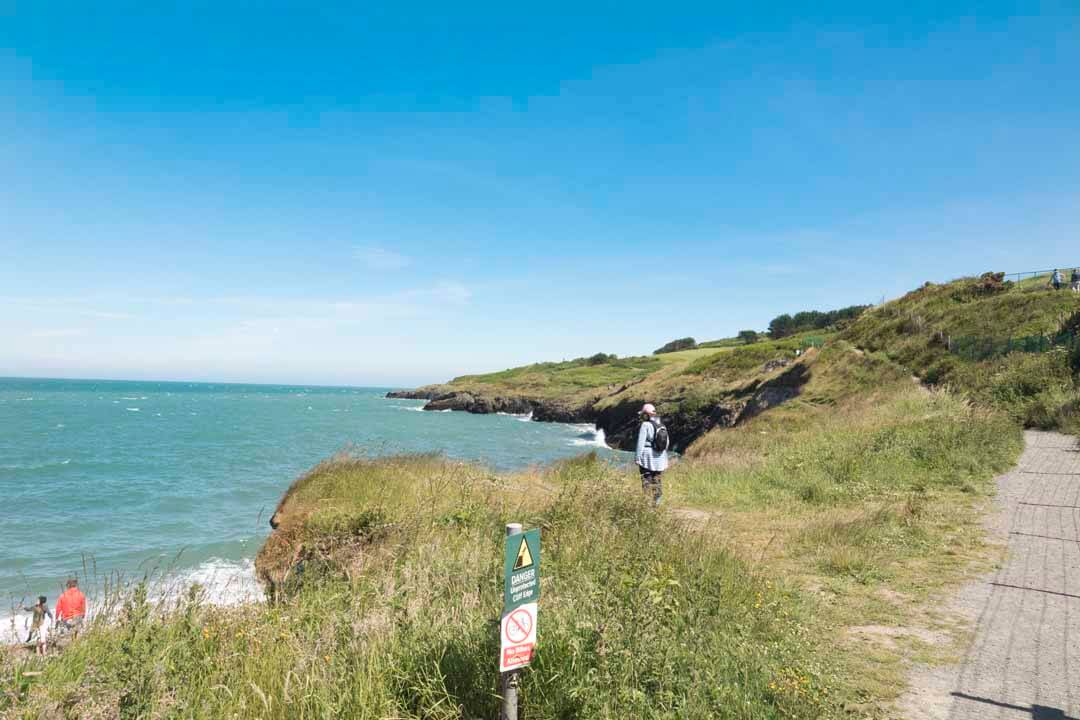
This walk starts beside the Wicklow golf course and has a car-park, but can overflow on busy days. This place is ideal for a picnic and I saw lots of people swimming. The walk is short looped 4km packed with coastal views, with each incline revealing even better views culminating with the Lighthouses, which are off limits, but bring a long lens to enjoy these marvellous structures. This is a small manageable fun walk and won’t make your calves cry.
This walk starts beside the Wicklow golf course and has a car-park, but can overflow on busy days. This place is ideal for a picnic and I saw lots of people swimming. The walk is short looped 4km packed with coastal views, with each incline revealing even better views culminating with the Lighthouses, which are off limits, but bring a long lens to enjoy these marvellous structures. This is a small manageable fun walk and won’t make your calves cry.
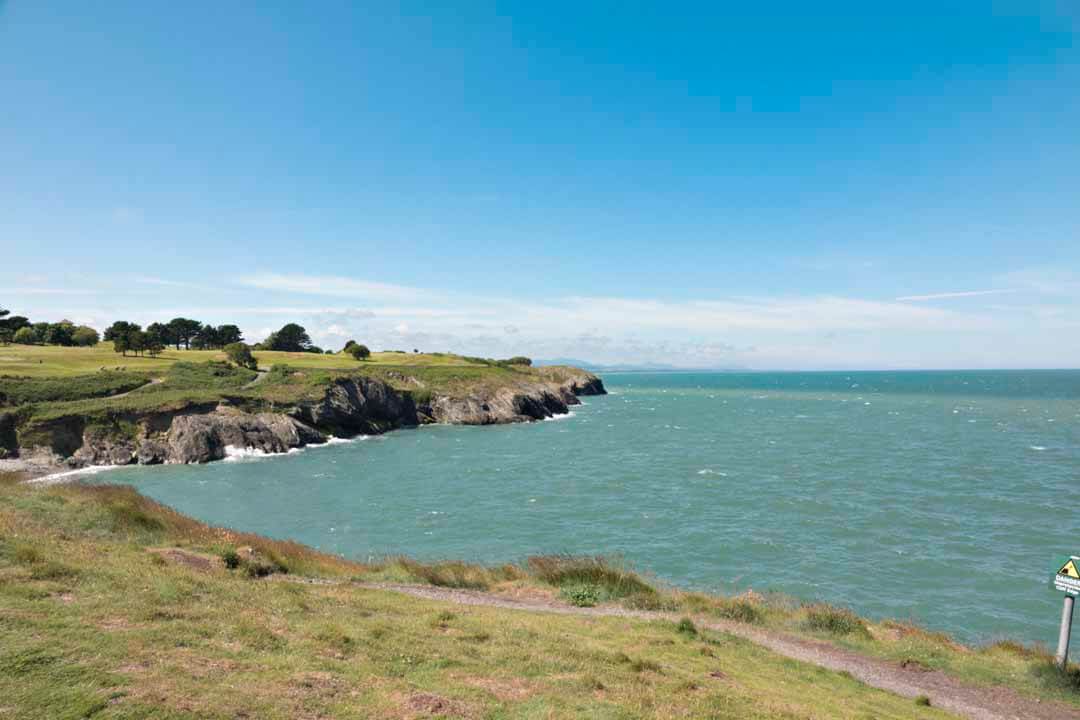
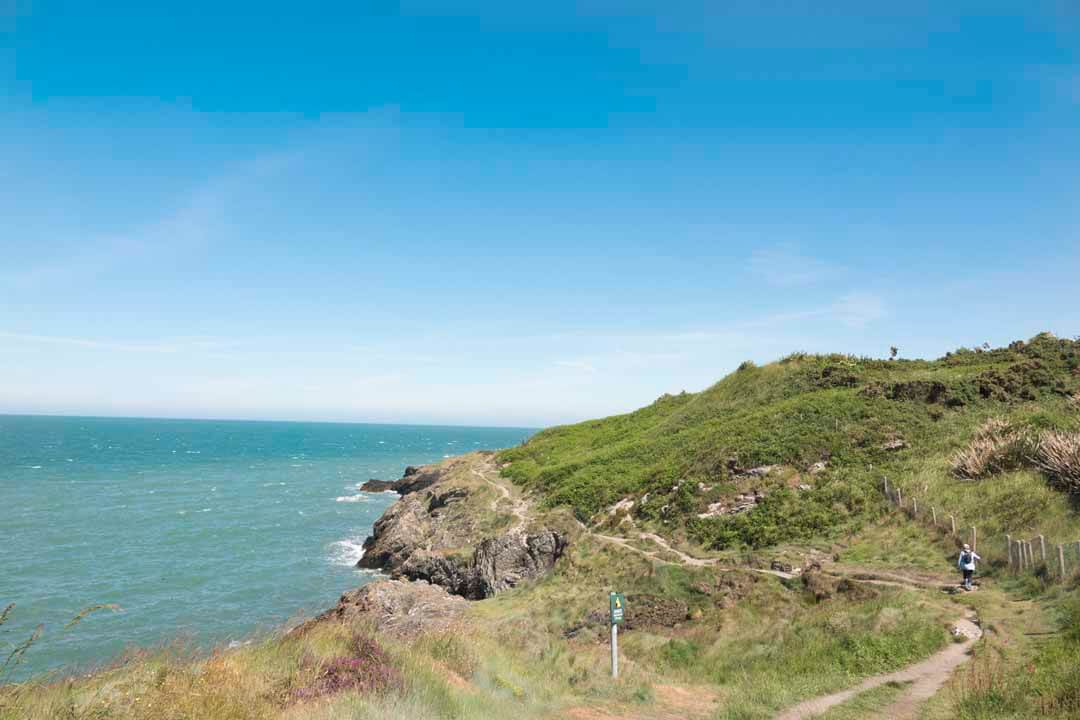
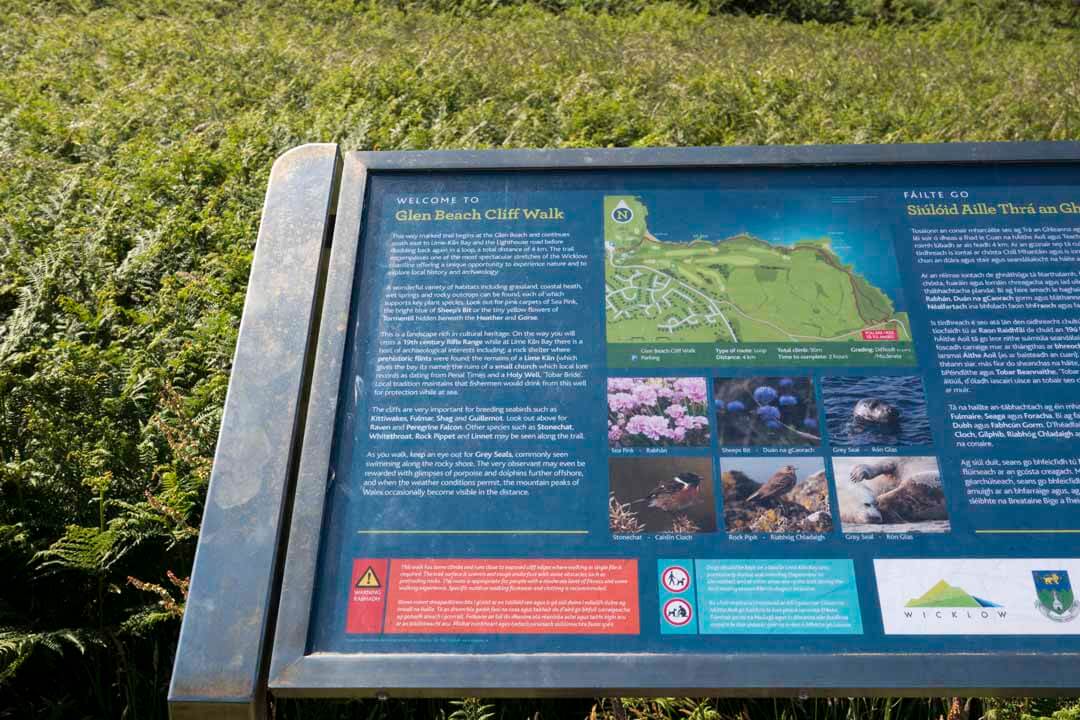
From above.
Glen Beach Cliff Walk
Glen Beach Cliff Walk
This way marked trail begins at the Glen Beach and continues south east to Lime-Kiln Bay and the Lighthouse road before doubling back again in a loop, a total distance of 4 km. The trail encompasses one of the most spectacular stretches of the Wicklow coastline offering a unique opportunity to experience nature and to explore local history and archaeology
This way marked trail begins at the Glen Beach and continues south east to Lime-Kiln Bay and the Lighthouse road before doubling back again in a loop, a total distance of 4 km. The trail encompasses one of the most spectacular stretches of the Wicklow coastline offering a unique opportunity to experience nature and to explore local history and archaeology
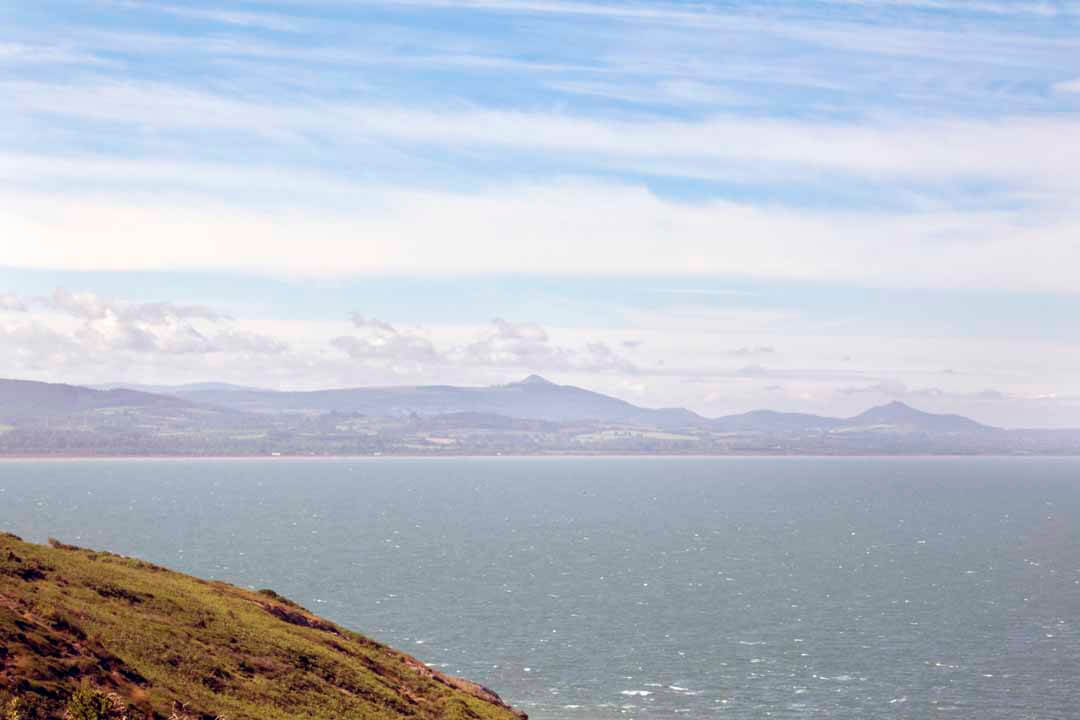
A wonderful variety of habitats including grassland, coastal heath, wet springs and rocky outcrops can be found, each of which. supports key plant spécies. Look out for pink carpets of Sea Pink the bright blue of Sheep’s Bit or the tiny year flowers of Tormentil hidden beneath the Heather and Gorse.
A wonderful variety of habitats including grassland, coastal heath, wet springs and rocky outcrops can be found, each of which. supports key plant spécies. Look out for pink carpets of Sea Pink the bright blue of Sheep’s Bit or the tiny year flowers of Tormentil hidden beneath the Heather and Gorse.
This is a landscape rich in cultural heritage on the way you will cross a 19th century Rifle Range while at Lime Kiln Bay there is a host of archaeological interests including a rock shelter where prehistoric flints were found a remains of & Lime Kiln (which gives the bay its name); the ruins of a small church which local lore records as dating from Penal Times, and a Holy Well, Tobar Brlde’.
This is a landscape rich in cultural heritage on the way you will cross a 19th century Rifle Range while at Lime Kiln Bay there is a host of archaeological interests including a rock shelter where prehistoric flints were found a remains of & Lime Kiln (which gives the bay its name); the ruins of a small church which local lore records as dating from Penal Times, and a Holy Well, Tobar Brlde’.
Local tradition maintains that fishermen would drink from this will for protection while at sea.
Local tradition maintains that fishermen would drink from this will for protection while at sea.
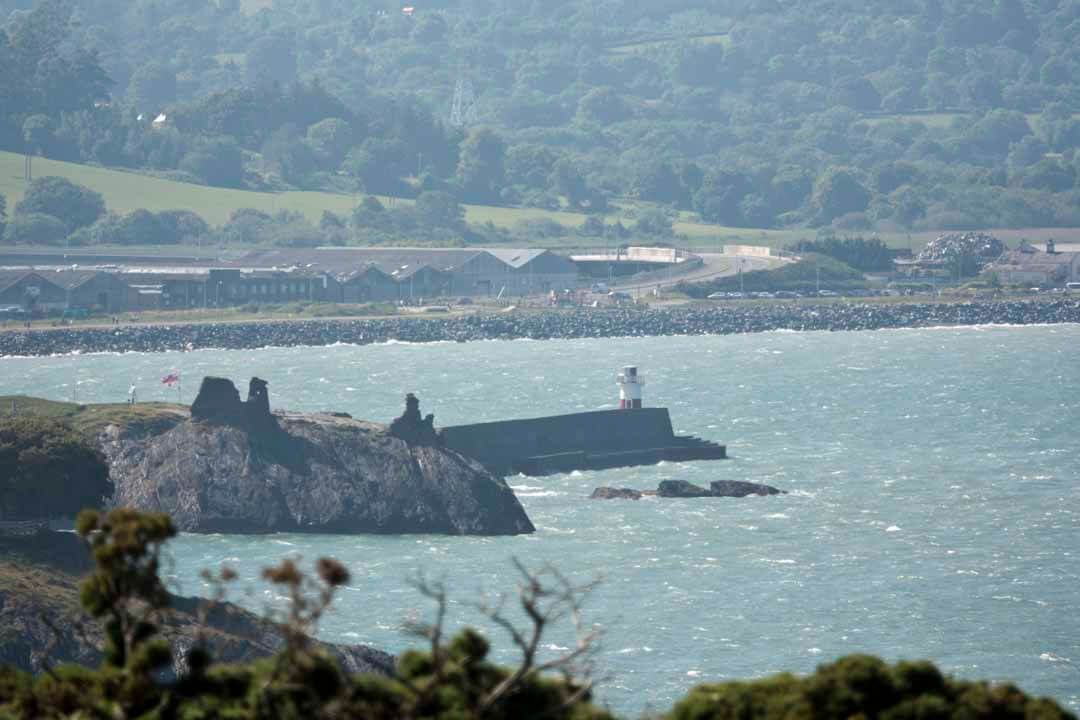
The cliffs are very important for breeding seabirds such as Kittiwakes, Fulmar, Shag and Guillemot. Look out above for Raven and Peregrine Falcon. Other species such as Stonechat, Whitethroat, Rock Pippet and Linnet may be seen the trail.
The cliffs are very important for breeding seabirds such as Kittiwakes, Fulmar, Shag and Guillemot. Look out above for Raven and Peregrine Falcon. Other species such as Stonechat, Whitethroat, Rock Pippet and Linnet may be seen the trail.
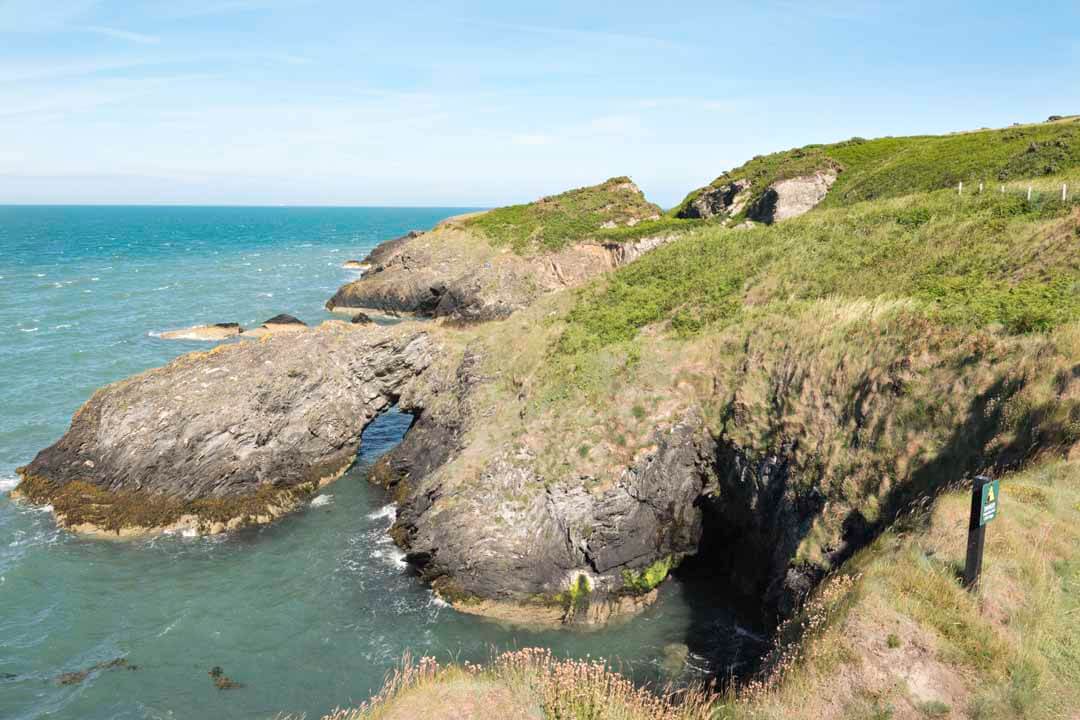
As you walk, keep an eye out for Grey Seals.commonly seen swimming along the rocky shore. The very observant may even be rewarded with glimpses of porpoise and dolphins further offshore, and when the weather conditions permit, the mountain peaks of Wales occasionally become visible in the distance.
As you walk, keep an eye out for Grey Seals.commonly seen swimming along the rocky shore. The very observant may even be rewarded with glimpses of porpoise and dolphins further offshore, and when the weather conditions permit, the mountain peaks of Wales occasionally become visible in the distance.
A Special Place for Wildlife
A Special Place for Wildlife
The ruins of the small church and adjacent lime kiln are evidence of human settlement here through the centuries. Today however, this remote bay provides a home to Grey Seal and breeding sea birds. The Grey Seal is one of two seal species which breed around the Irish coast. Lime Kiln Bay is a haul-out site for them, a safe place to which they return annually to breed, rest, moult and engage in social activity. Breeding from September to December, the pups are born with a white coat that they must shed (moult) before taking to the water. This usually occurs after about six weeks, during which time their mothers remain close by. During his period seals are vulnerable to disturbance by people and dogs and are best observed from a distance. The rocky outcrops overlooking Lime Kiln bay are ideal viewing sites. Keep your profile low on the skyline to avoid drawing attention to your presence. Keep dogs on a lead and never allow them to approach seals.
The ruins of the small church and adjacent lime kiln are evidence of human settlement here through the centuries. Today however, this remote bay provides a home to Grey Seal and breeding sea birds. The Grey Seal is one of two seal species which breed around the Irish coast. Lime Kiln Bay is a haul-out site for them, a safe place to which they return annually to breed, rest, moult and engage in social activity. Breeding from September to December, the pups are born with a white coat that they must shed (moult) before taking to the water. This usually occurs after about six weeks, during which time their mothers remain close by. During his period seals are vulnerable to disturbance by people and dogs and are best observed from a distance. The rocky outcrops overlooking Lime Kiln bay are ideal viewing sites. Keep your profile low on the skyline to avoid drawing attention to your presence. Keep dogs on a lead and never allow them to approach seals.
This area is part of Wicklow Head Special Protection Area (SPA). designated for the nationally important breeding population of Kittiwake. Fulmar, Shag, Guillemot, Herring Gull, Black Guillemot, Razor Bill, Peregrine Falcon and Raven also breed nearby. Wicklow Reef Special Area of Conservation (SAC) lies offshore, designated for its sub tidal reef formed by a honeycomb worm. Lying to the south, Wicklow Head is the most easterly point of Ireland.
This area is part of Wicklow Head Special Protection Area (SPA). designated for the nationally important breeding population of Kittiwake. Fulmar, Shag, Guillemot, Herring Gull, Black Guillemot, Razor Bill, Peregrine Falcon and Raven also breed nearby. Wicklow Reef Special Area of Conservation (SAC) lies offshore, designated for its sub tidal reef formed by a honeycomb worm. Lying to the south, Wicklow Head is the most easterly point of Ireland.
